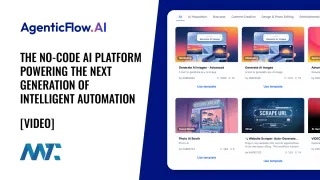Originally a term from journalism, the nut graf is just as vital for modern content creators as it is for reporters. In essence, it’s the paragraph that tells your audience what your story is really about, why it matters, and why they should keep reading. For marketers competing for attention in crowded digital spaces, mastering the nut graf can mean the difference between a skimmed glance and a fully engaged reader.
Example Nut Graf
A nut graf is the heartbeat of a well-structured article, distilling the story down to its essence and making clear why it matters to the reader. For marketers and content writers, it’s the paragraph that transforms a clever hook or anecdote into a meaningful takeaway, ensuring your audience understands the value of the content and why they should keep reading. Without it, even the most engaging opening risks leaving readers entertained but unconvinced, missing the opportunity to connect your message to their needs.
The nut graf typically follows your opening hook. Maybe you’ve begun with a customer success story, a surprising statistic, or a vivid scenario that draws readers in. Without explanation, though, those openings can leave people wondering where you’re going. That’s where the nut graf steps in: it bridges the gap by stating clearly and concisely the larger point or takeaway. It sets expectations, ensures alignment between your narrative and your message, and gives your audience a reason to invest their time.
For example, imagine opening a blog post with an anecdote about a small retailer struggling with abandoned carts. A well-placed nut graf could expand that single moment into a broader point about e-commerce challenges: “That experience isn’t unique. Across industries, abandoned carts cost businesses billions every year, and solving the problem requires more than better checkout design—it requires a complete rethinking of the customer journey.” In a single move, the story of one shop is transformed into a lesson relevant to thousands of potential readers.
In marketing, a nut graf also serves a strategic purpose beyond clarity. It helps anchor your content to your brand’s expertise and positioning. By explicitly stating the “why” of your article, you’re not only educating readers but also reinforcing your credibility. A vague or missing nut graf can leave content feeling directionless, while a strong one can frame the entire piece in a way that connects directly to your audience’s needs or pain points.
This technique is particularly effective in thought leadership, case studies, or long-form articles where readers might otherwise become distracted. Even in shorter formats like social posts or newsletters, a condensed nut graf, sometimes just one sharp sentence, can crystallize your message. Readers are busy and distracted, and the nut graf is your opportunity to signal, Here’s why this matters to you.
For content writers and marketers, then, the nut graf is not a throwaway line. It’s a tool of persuasion and retention. It guides the audience from curiosity to context, tying anecdotes, data, and insights into a coherent whole. If your story is a house, the nut graf is the foundation—solid, unglamorous, but absolutely essential. Writers who master it build content that resonates, persuades, and ultimately drives action.
